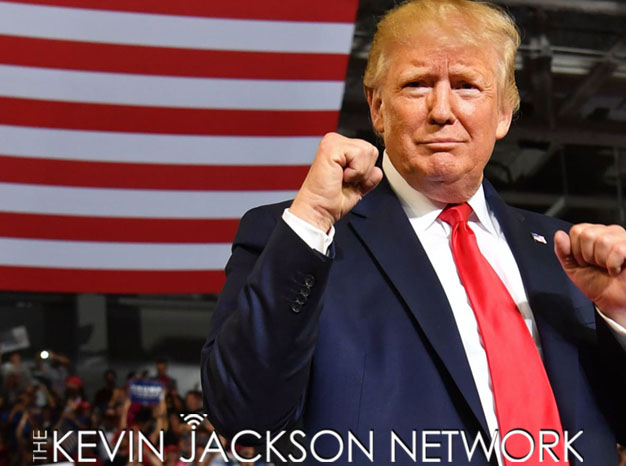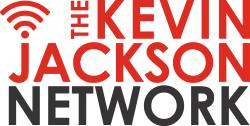
You’ve got to admire Trump’s tariff strategy—not just for the economics, but for the way it’s got every “expert” chasing their tail like a cat with a PhD in Economics from MSNBC.
For decades, we’ve been spoon-fed the idea that tariffs are bad. Like really bad. Like they’ll-kill-your-grandma-and-bankrupt-your-cousin’s-adopted-midget-goat kind of bad.
But Trump? He treats tariffs the way Gordon Ramsay treats a raw steak—he sears both sides, cranks up the heat, and doesn’t apologize for making everyone sweat.
Before we get into the meat of the topic, let’s address a key point: media outlets never report Trump’s tariff moves. They frame them—as “threats.” Like Trump’s holding the global economy hostage with a tweet and a Diet Coke.
And yet, if you look closely, what the media calls a “threat” is more like a polite heads-up: You’ve been exploiting the U.S. for decades. That ends August 1. Hugs!
Let’s look at some recent headlines and how the Left is trying to gaslight the public into believing Trump’s policies are dangerous:
“Trump unveils 50% copper tariffs, threatens 200% duties on pharma.”
“Trump’s previous tariff push terrified the world economy. He’s betting this time is different.”From AP we got, “Trump says he won’t extend August 1 deadline after letters to Japan, South Korea, others.”
In one particularly breathless moment, AP notes:
President Trump ramped up his tariff threats on Tuesday with a post on Truth Social, saying there will be no extensions and that money will be due and payable starting Aug. 1.
Oh no! He’s making countries pay what they owe…on time! What a monster.
One headline even tried decoding his logic:
“Trump’s new trade stance as he dictates rates: ‘A letter means a deal’”
To the baffled class of armchair economists and legacy journalists, this likely sounds like chaos. To real-world businesspeople, this is called clarity.
Trump issues a letter. The letter says, “This is the new deal. Sign here.” That’s not a threat—it’s a contract.
Trump’s Real Play: Keep Them Guessing, Keep Them Begging
Here’s what the chattering class never gets: Trump doesn’t negotiate like a bureaucrat. He negotiates like a builder, like a CEO. He sets the terms, doesn’t blink, and waits for the other side to realize they have no leverage. And that’s exactly what’s happening on the global stage.
Every article dancing around Trump’s latest moves ends up revealing one uncomfortable truth: Nobody knows what Trump will do. That uncertainty isn’t a bug. It’s the feature.
By keeping tariffs fluid—like a chess player who doesn’t telegraph his next move—Trump forces global competitors to negotiate from a position of weakness. For those paying attention, that’s how you win.
Show Me the Money: Trump’s Tariff Windfall
From Wolf Street, we get this juicy little nugget:
Collections from “customs and certain excise taxes” spiked to $28.0 billion in June, after hitting $24.0 billion in May, and $17.4 billion in April, according to the Treasury Department’s Daily Treasury Statement today. The June total was up by 214% from February, before the new tariffs were implemented, and by 270% or by $20.5 billion year-over-year.
This $20.5 billion is additional revenues, compared to a year ago. If tariffs bring in an additional $20.5 billion a month going forward, it would amount to about $250 billion a year in additional revenues.
Let that marinate: Trump says he’s going to impose tariffs, everyone screams about economic catastrophe. Then quietly, almost embarrassingly, the U.S. pulls in $20.5 billion more in just one month.
And here’s the kicker: $250 billion a year? Try $500+ billion when this strategy hits full throttle. Because as impressive as this windfall is, Trump’s just getting warmed up.
But What About Inflation? (Spoiler: There Isn’t Any)
Ah yes, the last-ditch argument of the “tariffs are evil” crowd: It’s going to raise prices for Americans!
Except, again, reality refuses to play along. The article continues,
So far, there are no signs that tariffs have been successfully passed on to consumers, and consumer price inflation for durable goods—a prime target of tariffs—was 0% month-to-month in May, according to the PCE price index last week (blue in the chart below), even as durable goods prices have been on an upward trend out of their deeply negative hole for over a year (red).
Translation: Prices are not going up because of tariffs. And why should they?
Companies are still raking in profits from the price-gouging days of Bidenflation. These are the same companies that shrunk your cereal boxes 20% and raised the prices by 25%. “Supply chain stress” it was called. These profiteers will not likely cry foul over a 10% tariff.
In fact, Trump’s move may finally pressure them to do what competition and ethics clearly haven’t: lower prices.
So not only is Trump boosting national revenue, he’s laying the groundwork to rein in inflation without the usual pain for consumers.
Tariff Critics: Professional Losers with Diplomas
It’s almost funny watching legacy media and economic “experts” panic every time Trump opens his mouth about tariffs. These are the same people who missed the housing crash, printed money into oblivion, and told us inflation was “transitory.”
Now, when Trump imposes tariffs that make us money, bring nations to the table, and don’t hurt Americans, they’re the first to sound the alarm like someone just spotted a cockroach in Davos.
It’s like watching weathermen predict a Category 5 hurricane, and then get angry when it turns out to be a light drizzle and an extra $20 billion in the treasury.
Let’s be blunt: if these clowns really knew how trade worked, they wouldn’t be hiding behind bylines—they’d be billionaires like Trump.
Negotiation as Leverage: The “Threat” that Isn’t
What the media paints as chaos is actually calculated brilliance. Trump announces a new tariff or deadline. Countries panic. Corporations lobby. And then suddenly… they agree to new terms.
Why? Because nobody wants to lose access to the American consumer market—the biggest prize in the global economy.
Even the AP inadvertently admitted Trump’s power in their own headline:
“Trump says he won’t extend August 1 deadline after letters to Japan, South Korea, others.”
He didn’t call for a war summit. He didn’t send 20 negotiators. He sent a letter—and they scrambled.
The Strategic Genius of “Unpredictability”
Trump’s secret sauce is unpredictability. While Biden leaks every move in advance like a fogged-up faucet, Trump offers lots of scenarios. He lets the world guess, and in doing so, he forces them to move first and fast.
That unpredictability is a negotiating tactic older than Machiavelli and more effective than any think-tank study.
You can’t outplay someone if you don’t know what game they’re playing.
Final Thought: It’s Not a Threat If It’s a Promise
What Trump is doing isn’t new. It’s just been forgotten. For decades, American politicians negotiated like eager interns begging for a seat at the G7 lunch table.
Trump flipped that table.
He reminded the world that access to American wealth is a privilege, not a right. And if you want access, you’ll play by our rules—or you’ll pay. Bigly.
With each tariff announcement, Trump isn’t threatening anyone. He’s simply putting America first—and putting everyone else on notice.
So while media outlets hyperventilate over Trump’s “dangerous” trade policies, the Treasury is quietly laughing all the way to the bank. And Americans? They’re getting stronger by the month.
In Trump’s world, a tariff isn’t a threat. It’s a contract offer—with a deadline. Miss it, and you’ll pay retail.
And that, ladies and gentlemen, is how you make America rich again.



